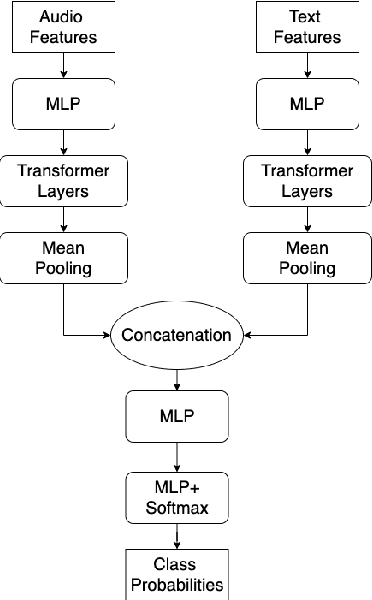Hezhao Zhang
EmoBox: Multilingual Multi-corpus Speech Emotion Recognition Toolkit and Benchmark
Jun 11, 2024Abstract:Speech emotion recognition (SER) is an important part of human-computer interaction, receiving extensive attention from both industry and academia. However, the current research field of SER has long suffered from the following problems: 1) There are few reasonable and universal splits of the datasets, making comparing different models and methods difficult. 2) No commonly used benchmark covers numerous corpus and languages for researchers to refer to, making reproduction a burden. In this paper, we propose EmoBox, an out-of-the-box multilingual multi-corpus speech emotion recognition toolkit, along with a benchmark for both intra-corpus and cross-corpus settings. For intra-corpus settings, we carefully designed the data partitioning for different datasets. For cross-corpus settings, we employ a foundation SER model, emotion2vec, to mitigate annotation errors and obtain a test set that is fully balanced in speakers and emotions distributions. Based on EmoBox, we present the intra-corpus SER results of 10 pre-trained speech models on 32 emotion datasets with 14 languages, and the cross-corpus SER results on 4 datasets with the fully balanced test sets. To the best of our knowledge, this is the largest SER benchmark, across language scopes and quantity scales. We hope that our toolkit and benchmark can facilitate the research of SER in the community.
1st Place Solution to Odyssey Emotion Recognition Challenge Task1: Tackling Class Imbalance Problem
May 30, 2024



Abstract:Speech emotion recognition is a challenging classification task with natural emotional speech, especially when the distribution of emotion types is imbalanced in the training and test data. In this case, it is more difficult for a model to learn to separate minority classes, resulting in those sometimes being ignored or frequently misclassified. Previous work has utilised class weighted loss for training, but problems remain as it sometimes causes over-fitting for minor classes or under-fitting for major classes. This paper presents the system developed by a multi-site team for the participation in the Odyssey 2024 Emotion Recognition Challenge Track-1. The challenge data has the aforementioned properties and therefore the presented systems aimed to tackle these issues, by introducing focal loss in optimisation when applying class weighted loss. Specifically, the focal loss is further weighted by prior-based class weights. Experimental results show that combining these two approaches brings better overall performance, by sacrificing performance on major classes. The system further employs a majority voting strategy to combine the outputs of an ensemble of 7 models. The models are trained independently, using different acoustic features and loss functions - with the aim to have different properties for different data. Hence these models show different performance preferences on major classes and minor classes. The ensemble system output obtained the best performance in the challenge, ranking top-1 among 68 submissions. It also outperformed all single models in our set. On the Odyssey 2024 Emotion Recognition Challenge Task-1 data the system obtained a Macro-F1 score of 35.69% and an accuracy of 37.32%.
Beyond Hate Speech: NLP's Challenges and Opportunities in Uncovering Dehumanizing Language
Feb 21, 2024Abstract:Dehumanization, characterized as a subtle yet harmful manifestation of hate speech, involves denying individuals of their human qualities and often results in violence against marginalized groups. Despite significant progress in Natural Language Processing across various domains, its application in detecting dehumanizing language is limited, largely due to the scarcity of publicly available annotated data for this domain. This paper evaluates the performance of cutting-edge NLP models, including GPT-4, GPT-3.5, and LLAMA-2, in identifying dehumanizing language. Our findings reveal that while these models demonstrate potential, achieving a 70\% accuracy rate in distinguishing dehumanizing language from broader hate speech, they also display biases. They are over-sensitive in classifying other forms of hate speech as dehumanization for a specific subset of target groups, while more frequently failing to identify clear cases of dehumanization for other target groups. Moreover, leveraging one of the best-performing models, we automatically annotated a larger dataset for training more accessible models. However, our findings indicate that these models currently do not meet the high-quality data generation threshold necessary for this task.
 Add to Chrome
Add to Chrome Add to Firefox
Add to Firefox Add to Edge
Add to Edge